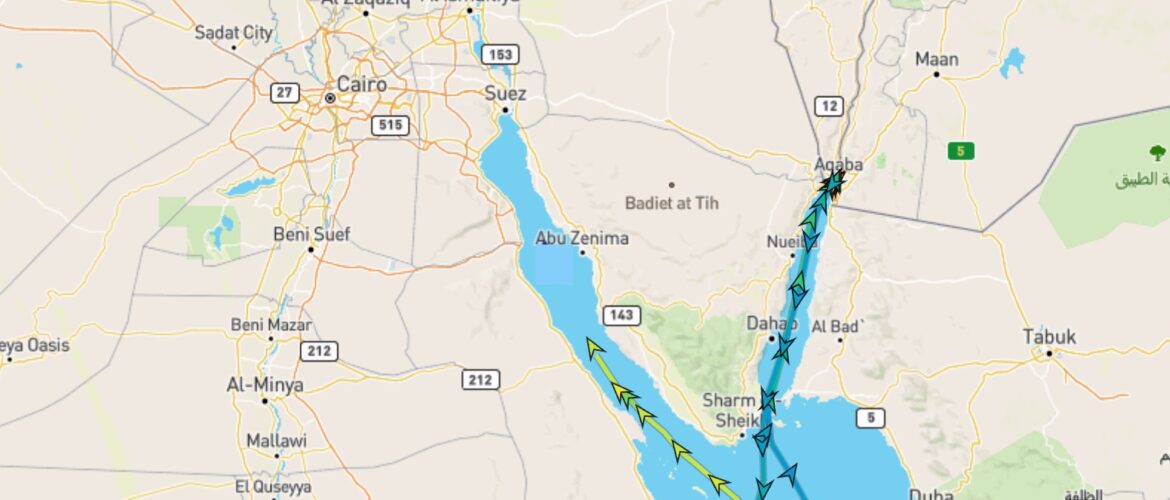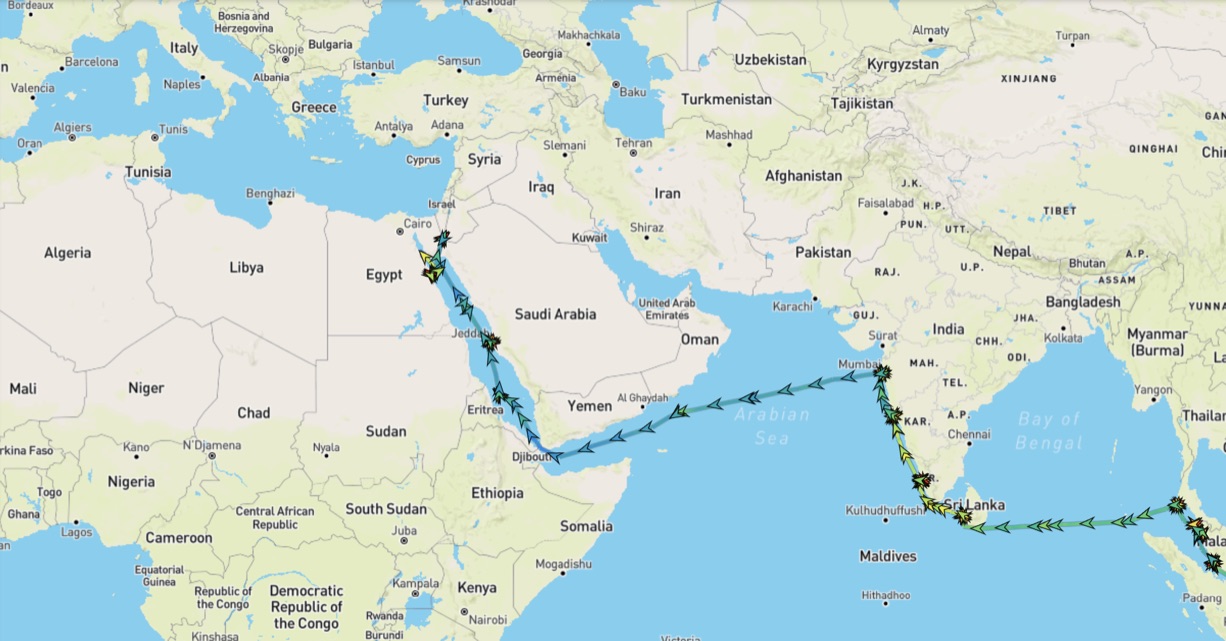
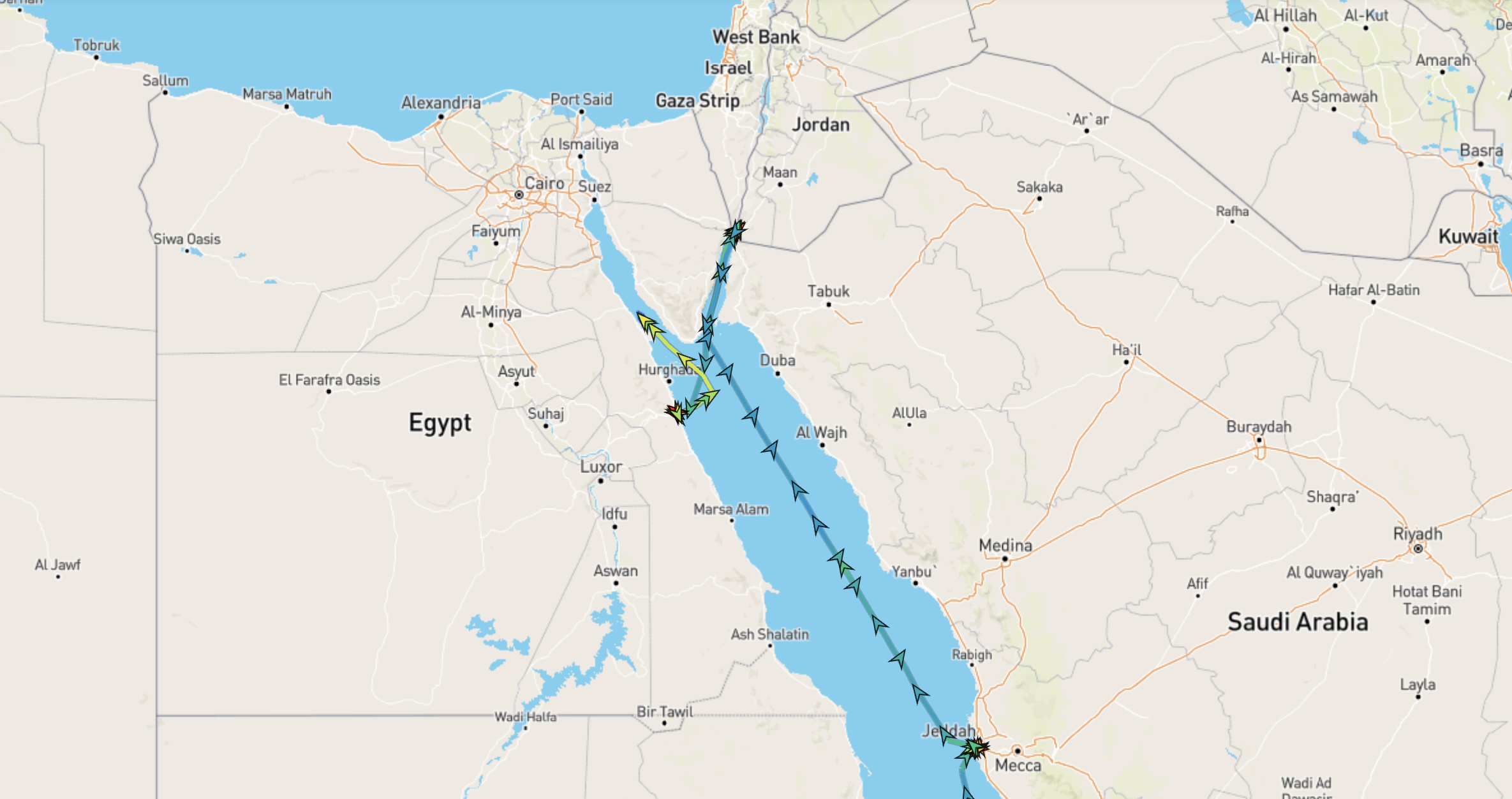
Noon Report:
- Location: N 28° 11.60′, E 033° 20.90′
- Speed: 10 knots
- Course: 327º
- Weather: Clear
- Temperature: 16º C; 61º F
- Wind: NNW 7 knots; 8 mph
- Sea: Calm
Didn’t set the alarm this morning so we could sleep in past 5:30 for once.
It was nice. Eventually our stomachs informed us that it was time to get up, so as a reward we treated them to Mamsen’s Waffles.
Off the starboard side we had a nice view of Egypt as we moved into the narrow gulf of Suez.
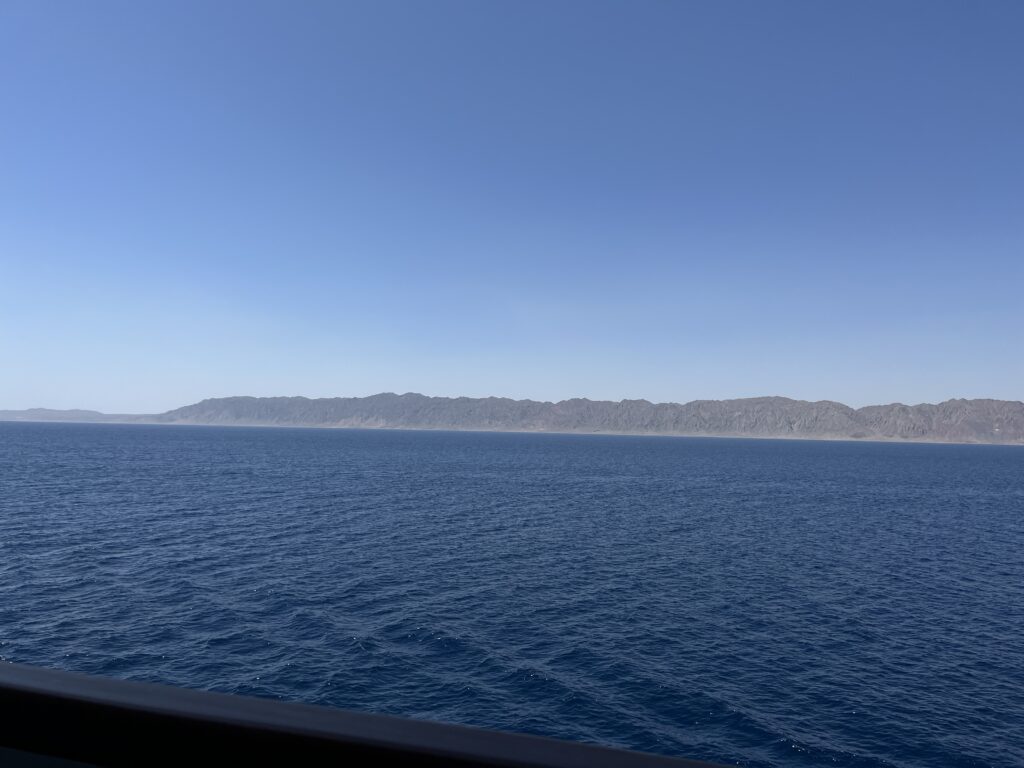
After a leisurely breakfast it was off to the Theatre for the 9:30 “Science and Medicine of Spices.”
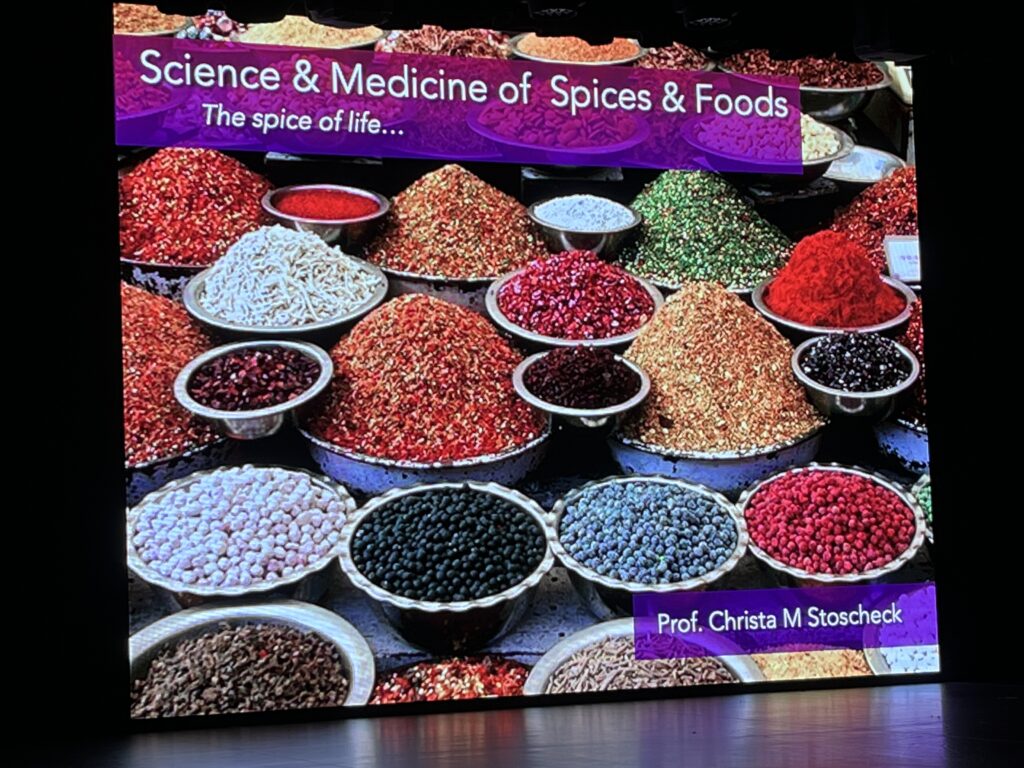
Then we got started on blog updates, skipping the 11:00 talk on the moon but not missing our morning nap (Cheryl) or quartet rehearsal (Randy).
At 12:15, I left Cheryl busily typing away and headed upstairs to join our noontime trivia team (yes, we’ve joined another team – thanks to Julian Loyd-Webber) in another stunning performance. (Actually it wasn’t bad. We finished out of the running but made a strong showing nonetheless.)
The lunch special today was Meygoo Polo – a Persian rice dish with shrimp and cashew nuts and raisins packed into a pyramid shape – and it was delicious!
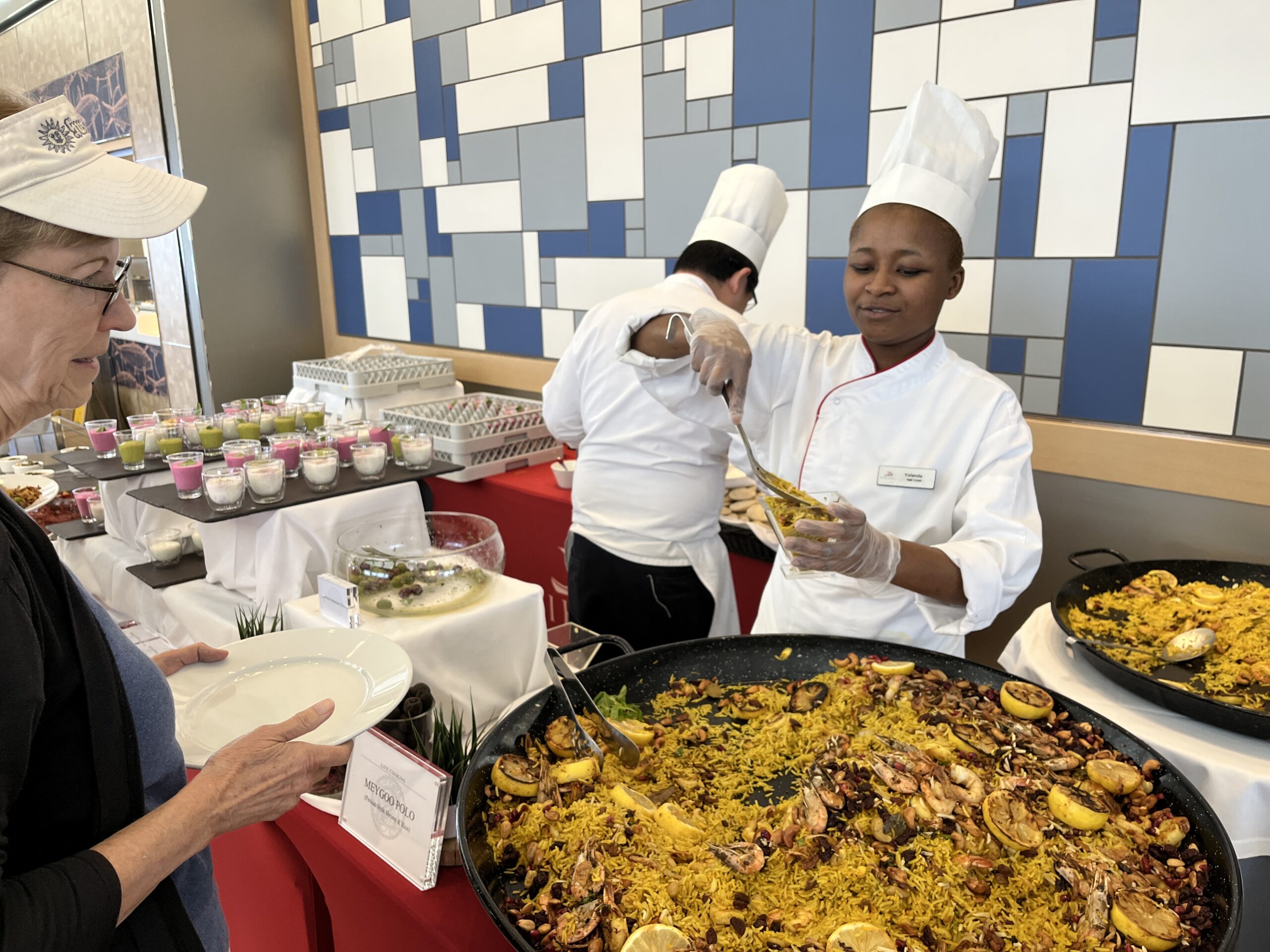
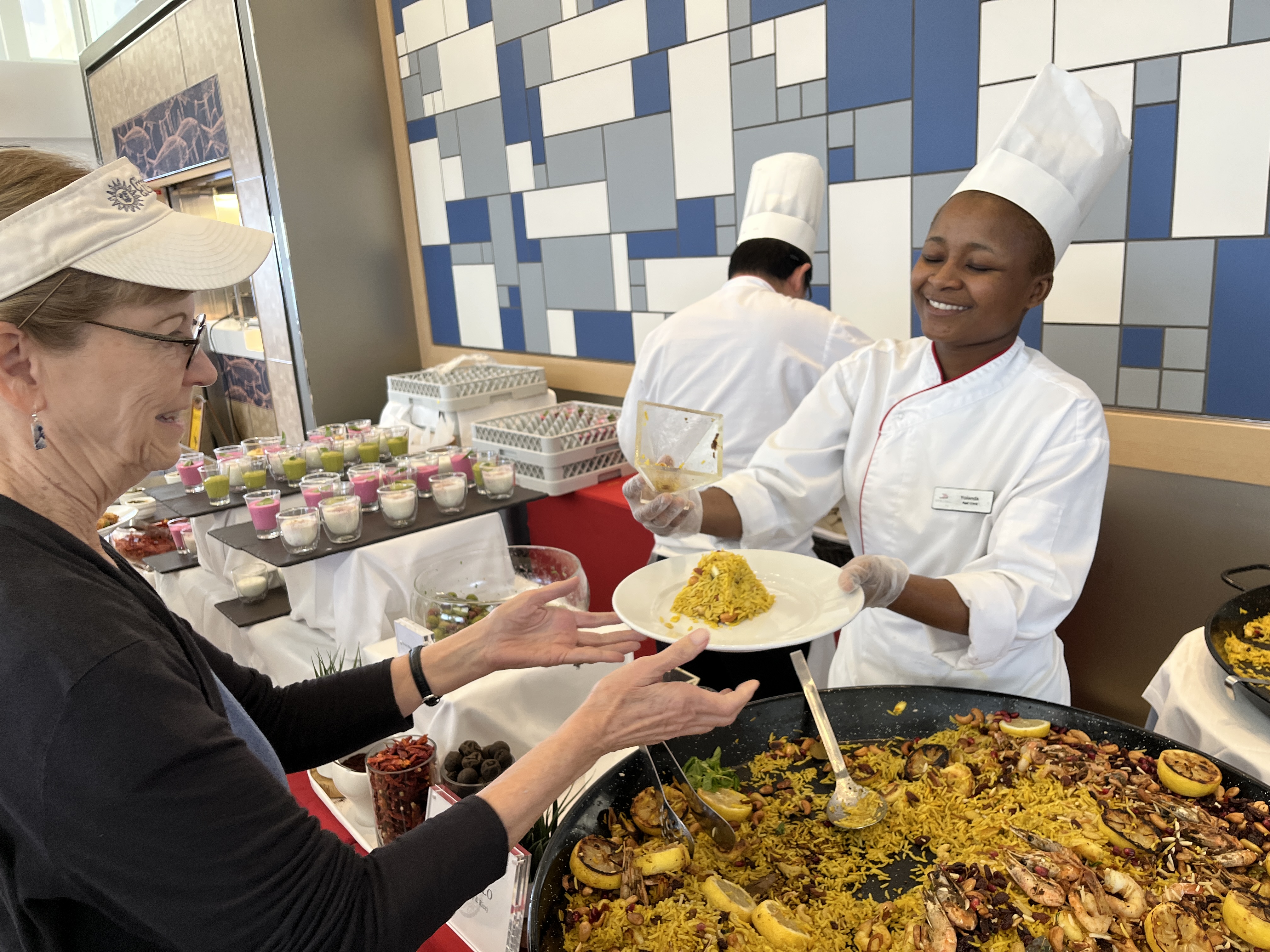
3:00 was a Forum with our Resident Historian: “Egypt and the Bible.”
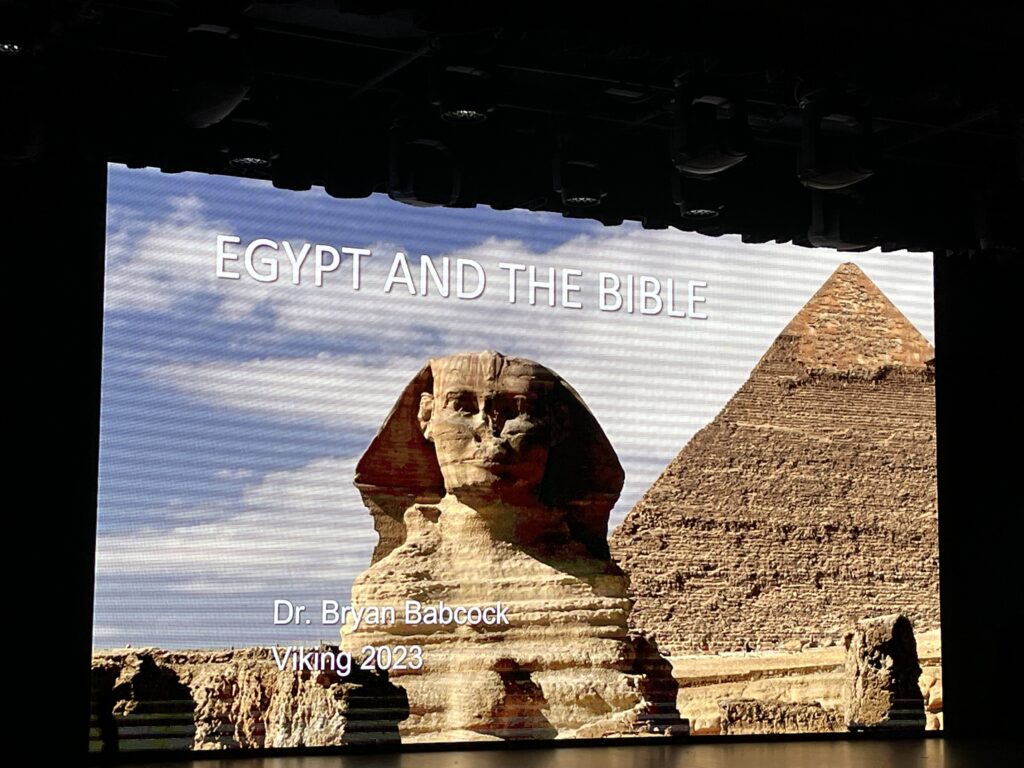
He looked at all kinds of places where Egypt is involved in the biblical story – it is mentioned more often than any other country except Israel itself. It is most often seen in the role of ‘protector’ – shielding Israel from large forces to its north and east.
At 4:30 we attended a lecture: “The Passage Between the Seas” – a look into the background of the Suez Canal.
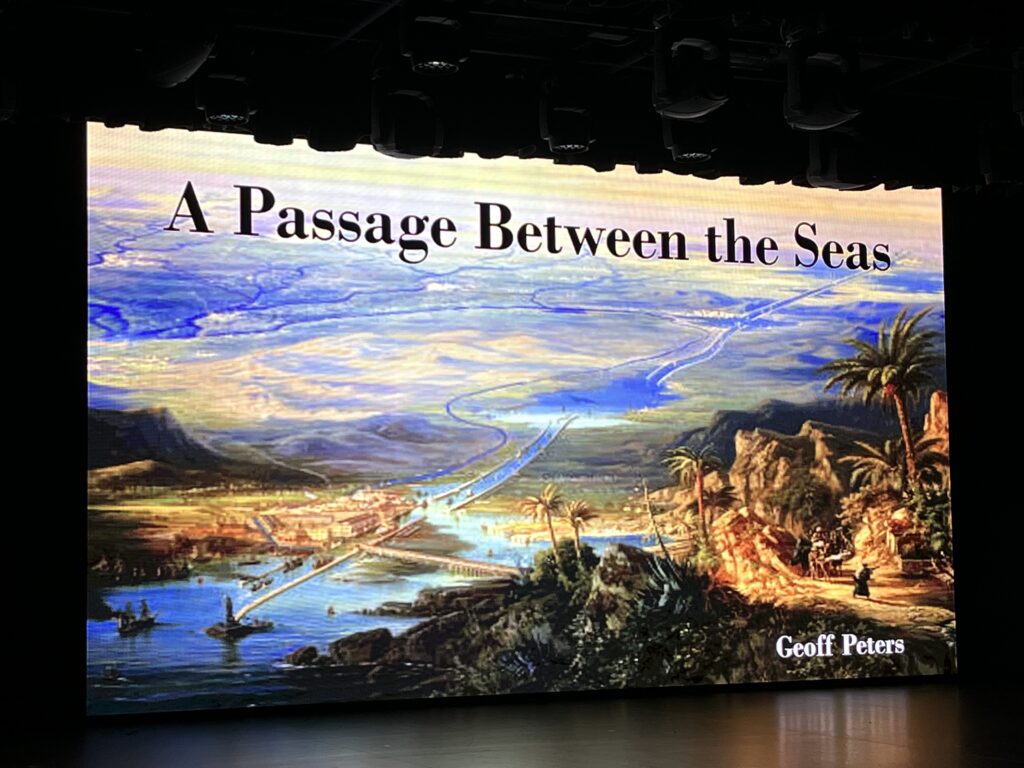
And the 6:30 lecture was “A French Empress & an Egyptian Canal.” The French Empress was Eugenie, wife of Napoleon III and the canal was, well…
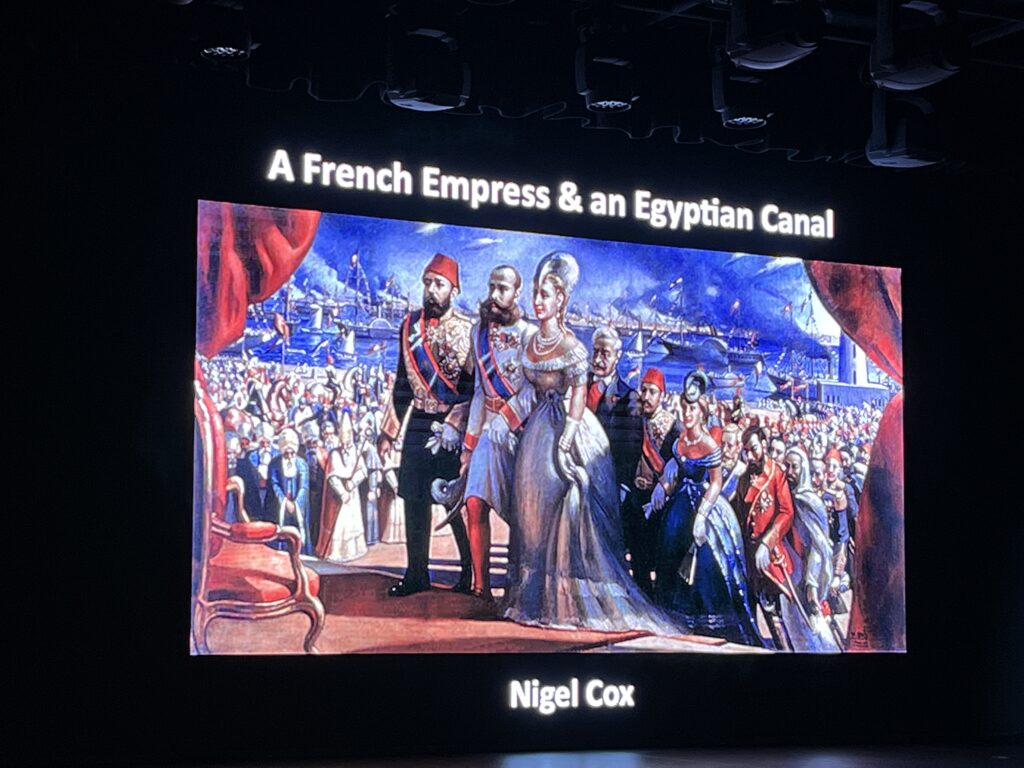
Then it was a quick dinner before another glorious performance at BBB. Today was a “Guess the Year” (everybody groaned) so we weren’t really disappointed in our 8/32.
Back in the stateroom we were beat – there were five lectures today (we only made it to four).
Sea days can be really draining so we hit the hay.
We’ll see what we can get done during tomorrow’s Suez Canal transit. I expect we’ll spend a good amount of time up on deck going OOO-AHH at miles of farmland on the west and miles of sand on the east. We’ll see.
Till then,
R
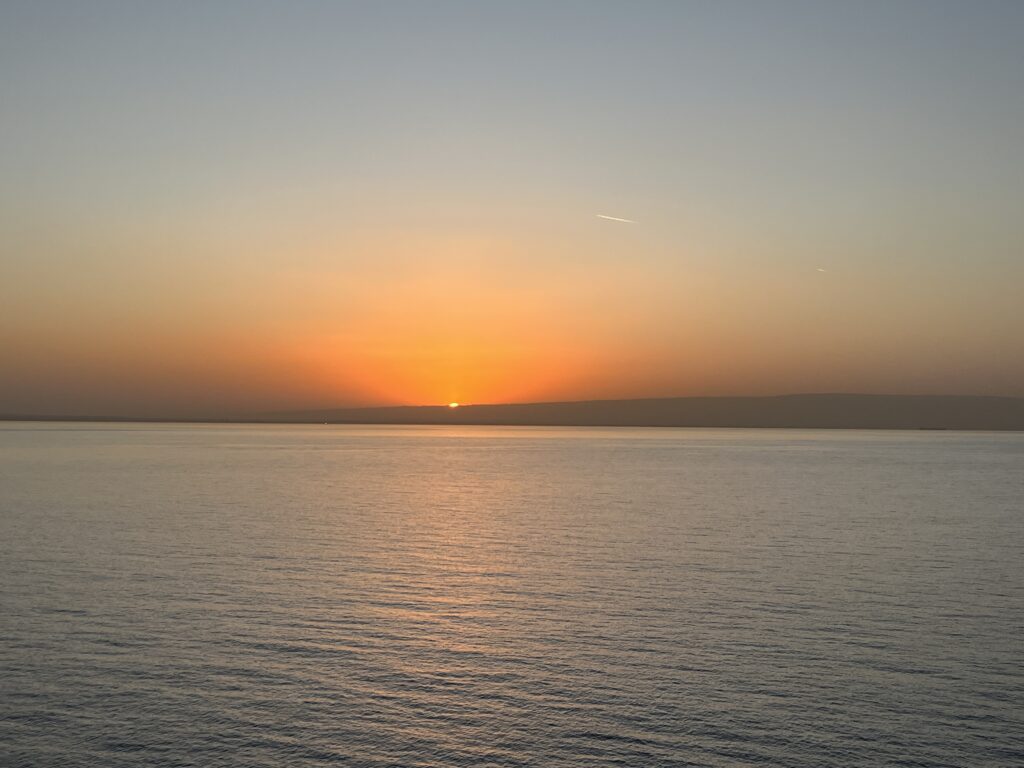
Cheryl’s Factoids:
- EGYPT AND THE BIBLE: lecturer showed us several pictures of actual Egyptian carvings depicting Semitic people coming to Egypt wearing beards and multi-colored tunics, the pharaoh giving rings and presents to an unknown man, making store houses, et cetera, which are recounted in the Bible (however the Israelites did NOT build the pyramids as slaves – these were done by highly skilled workmen centuries earlier). Egypt is the only place where Christianity has been consistently practiced since the time of Jesus.
- When Egypt was under French control, the Rosetta Stone was discovered by a Frenchman in 1799. After the French surrender of Egypt in 1801, it was passed to the British and is now in the British Museum in London. It is famous for having the same proclamation rendered into three different languages – which is how Hieroglyphic writing was finally deciphered.
- SPICES: my takeaway from this was (1) Spices are made from minerals, roots, bark, leaves, flowers, fruit, and stems. (2) Black pepper and garlic reduce cancer causing enzymes caused by cooking meat at high temperatures.
- PASSAGE BETWEEN THE SEAS: The building of the Suez Canal commenced in 1859 and took 10 1/2 years to complete. It’s length is 120 miles (mostly dug out by HAND) and to a depth of 66 feet. This saved 5,100 nautical miles (going around Africa to get to the Arabian Sea) and saved up to a month in a wind-powered sailing ship (13 days for a modern steam ship). Back in 1279 BC the Pharaohs built a short canal from the Nile to the Bitter Lakes and from the Bitter Lakes to the Red Sea – but it only worked during the flooding season of the Nile.
- A FRENCH EMPRESS AND AN EGYPTIAN CANAL: The famous painting above shows Pasha Sa id (the “Ottoman Viceroy of Egypt” who agreed to the canal – Port Sa id on the Mediterranean is named after him) accompanying the Kaiser of Prussia and Empress Eugenie of France, followed by Ferdinand de Lesseps, the French developer of the Suez Canal (he tried to build the Panama Canal also but found building locks over mountains, digging through jungle, and workers dropping dead of typhoid and malaria was a whole different deal). Empress Eugenie (the Spanish wife of Napoleon III – who was too sick to attend) attended the Ceremonial Grand Opening of the Suez Canal in November 1869. She played a political role in France when Napoleon III was away fighting wars and improved relations with Britain, becoming a good friend of Queen Victoria. She strongly supported equality for women. When French politics turned bad and Prussia declared war on France defeating Napoleon III, she sent away her jewels and many pieces art from the Louvre to save them from invaders. The French people blamed the “Spanish queen” and she left just before the mob. She went into exile in England, her son arriving later, while her husband was imprisoned. Paris was surrounded then occupied by the Prussians in 1871. When Napoleon III was finally released from prison he joined her in England (dying shortly afterward) and she sold her jewels to support them. Her son joined the British army and was killed in South Africa fighting the British-Zulu War. Upon the outbreak of World War I she donated her steam yacht to the British navy. She funded a military hospital at her home as well as made large donations to French hospitals. After World War I, Eugenie lived long enough to see the collapse of other European monarchies, such as those of Russia, Germany and Austria-Hungary. She remained in England until her death and her house has become a Catholic girls’ school.
